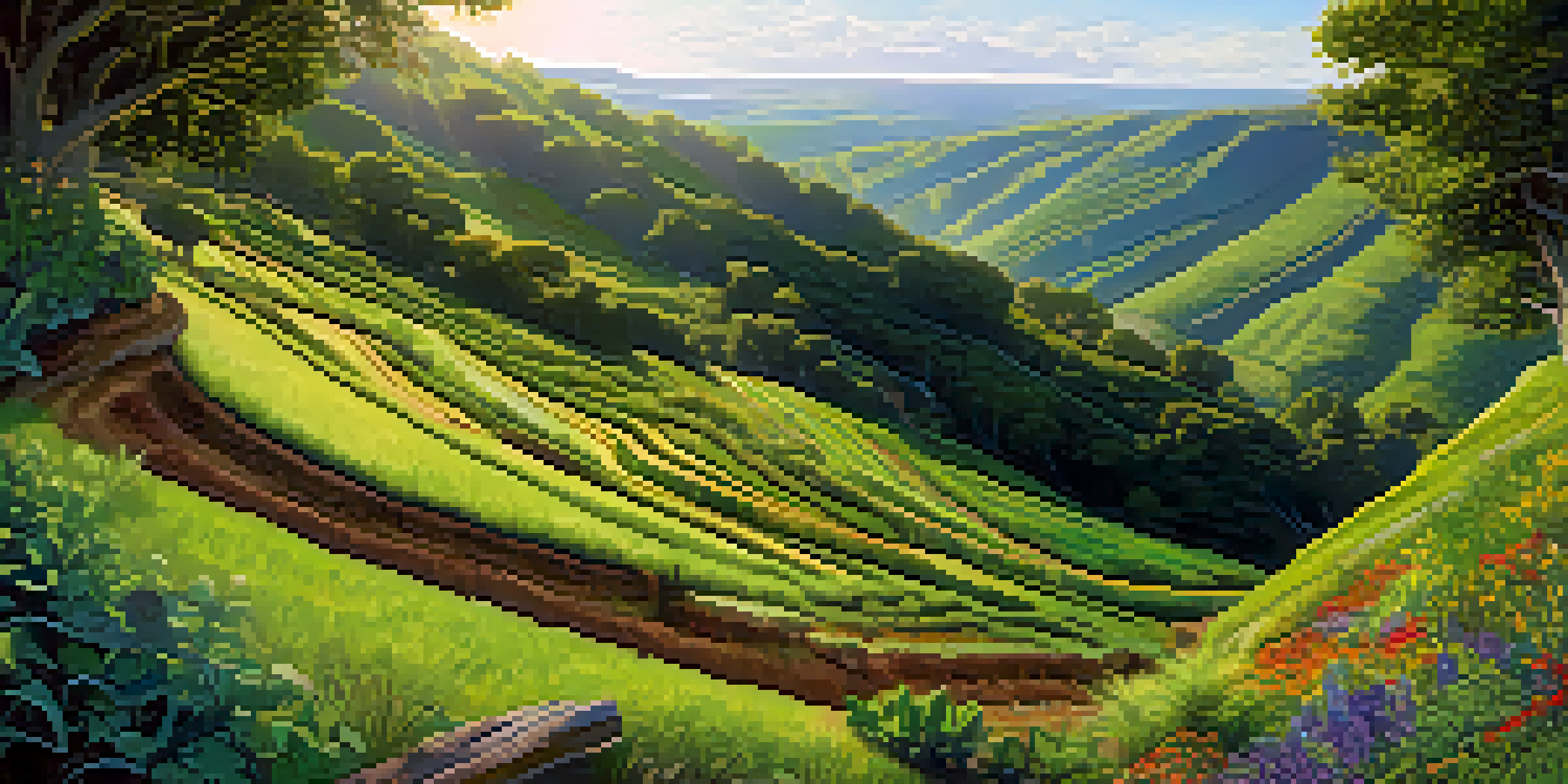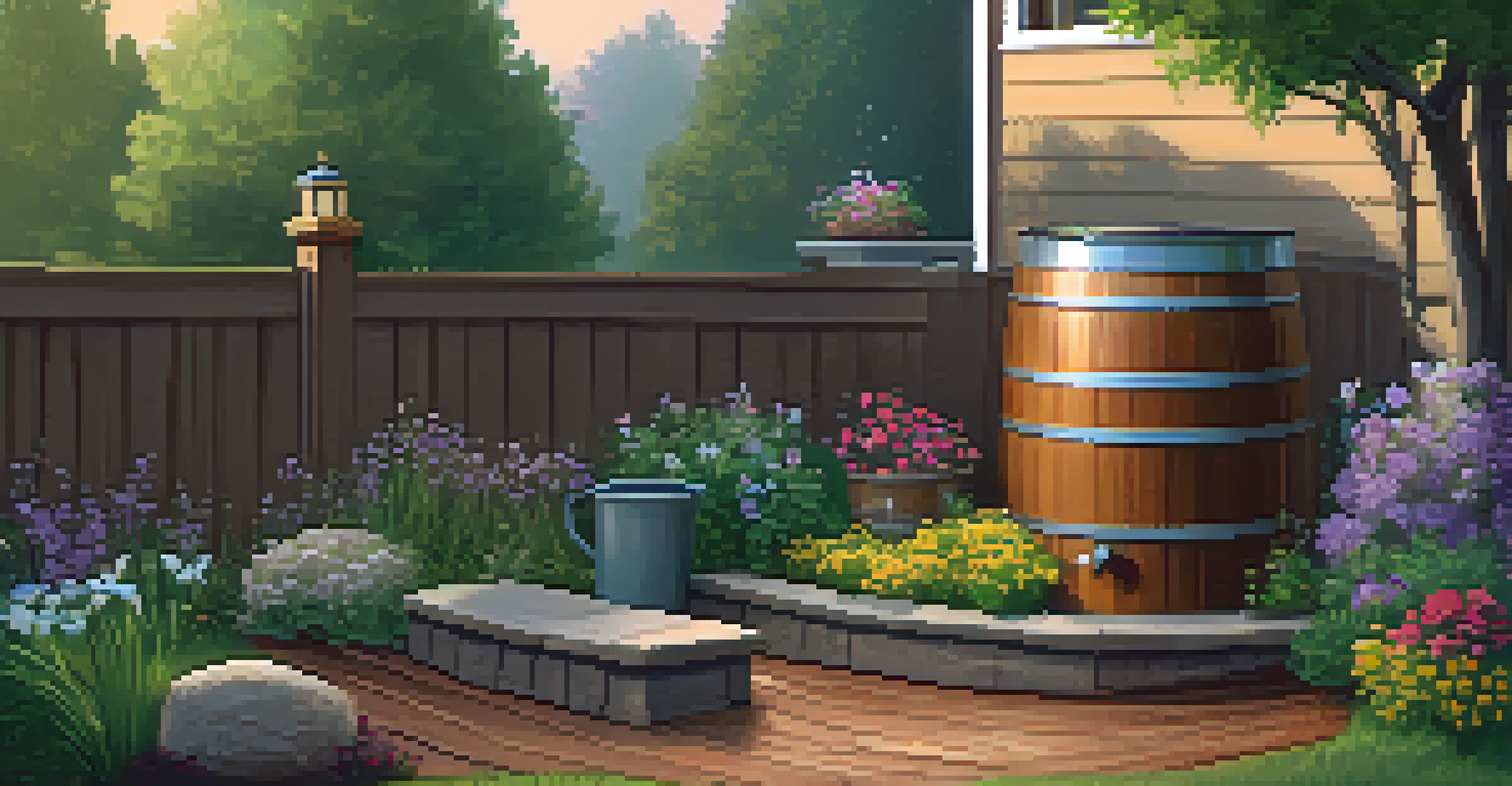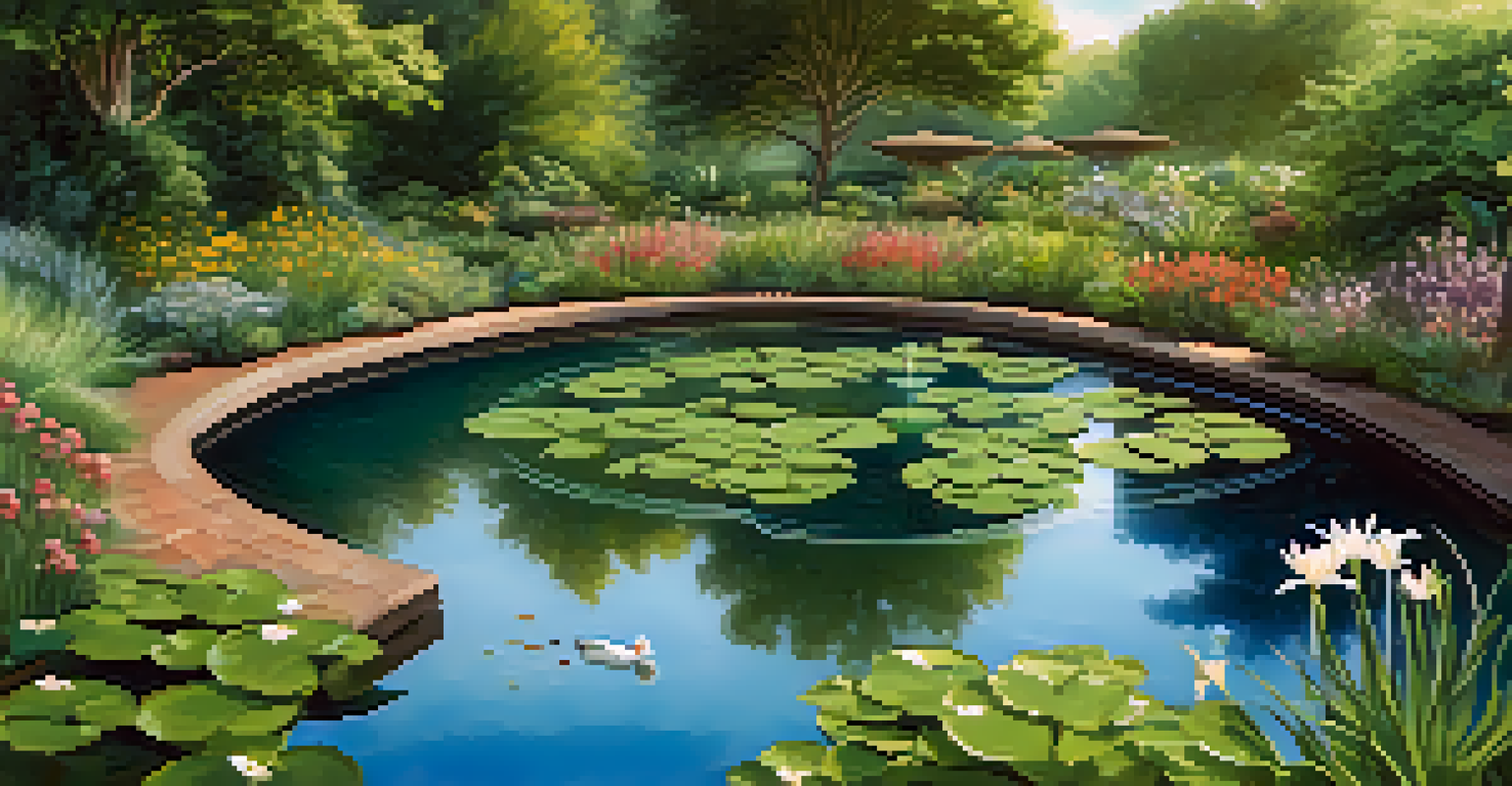Water Management Strategies in Permaculture Design

Understanding Water in Permaculture Systems
Water is the lifeblood of any permaculture system, influencing plant growth and ecosystem health. In permaculture design, the goal is to mimic nature's water cycles, ensuring that water is efficiently captured and utilized. By understanding how water moves through the landscape, we can create systems that support biodiversity and resilience.
Water is the driving force of all nature.
Permaculture teaches us to observe our surroundings carefully. For instance, watching how rainwater flows across your property can reveal natural drainage patterns. By harnessing these insights, we can design water management strategies that work with the land rather than against it.
This holistic approach not only conserves water but also enhances soil fertility and plant health. By integrating water management into our permaculture designs, we can cultivate thriving ecosystems that benefit both us and the environment.
Rainwater Harvesting Techniques
Rainwater harvesting is a key method in permaculture for capturing and storing water. This involves collecting rainwater from surfaces like roofs and directing it into storage systems, such as barrels or ponds. By utilizing this free resource, we can reduce reliance on municipal water supplies and improve sustainability.

For example, a simple rain barrel placed under a downspout can collect thousands of liters of water during a rainy season. This stored water can then be used for irrigation during drier periods, ensuring that plants have the moisture they need to thrive. It's a perfect way to make the most of what nature provides.
Water Conservation in Permaculture
Effective water management techniques in permaculture, such as rainwater harvesting and swales, enhance ecosystem health and resilience.
Implementing rainwater harvesting not only conserves water but also helps in reducing runoff and erosion. By capturing and using rainwater effectively, we create a more resilient landscape that supports healthy ecosystems.
Swales: The Art of Contour Ditches
Swales are shallow, ditch-like structures designed to manage water flow across a landscape. They are typically placed along the contours of the land, allowing them to slow down water runoff and promote infiltration into the soil. This technique effectively reduces erosion while maximizing water retention.
The best time to plant a tree was 20 years ago. The second best time is now.
Imagine a gentle slope where rainwater rushes down. By creating swales, we can transform that rushing water into a slow-moving stream that nourishes the soil. As water seeps into the ground, it not only hydrates plants but also recharges groundwater supplies.
In addition to their functional benefits, swales can enhance biodiversity by creating microhabitats. By planting diverse species along the swales, we can attract beneficial insects and improve overall ecosystem health, making our permaculture design more vibrant.
Ponds and Water Bodies in Permaculture
Incorporating ponds or other water bodies into permaculture designs can greatly enhance water management. These features act as natural reservoirs, capturing rainwater and providing a habitat for various wildlife. By creating a balanced aquatic ecosystem, we can enjoy both aesthetic and functional benefits.
For instance, a well-designed pond can serve multiple purposes: it can irrigate surrounding plants, provide a habitat for fish, and even help in pest control by attracting beneficial insects. The key is to design these water bodies thoughtfully to ensure they integrate seamlessly into the landscape.
Creating Microclimates for Plants
Strategically designed microclimates optimize water use and promote plant growth by leveraging varying local conditions.
Additionally, ponds can help in moderating local temperatures, creating a microclimate that can benefit nearby plants. By understanding the role of water bodies, we can optimize our permaculture systems for better yields and healthier ecosystems.
Soil Moisture Management Techniques
Maintaining soil moisture is crucial for healthy plant growth in permaculture. Techniques such as mulching, cover cropping, and strategic planting can help retain moisture in the soil. By implementing these practices, we can create a more sustainable and productive landscape.
For example, applying organic mulch around plants not only suppresses weeds but also retains moisture by reducing evaporation. This simple practice can make a significant difference in how much water plants receive, especially during hot summer months.
Cover crops, on the other hand, protect the soil and enhance its structure. They prevent erosion, improve soil fertility, and help retain moisture, creating a more resilient ecosystem that thrives even in challenging conditions.
Creating Microclimates for Water Efficiency
Microclimates are small, localized areas that have different climate conditions than the surrounding region. By strategically placing plants, structures, and water features, we can create microclimates that optimize water use and plant growth. This concept is essential in permaculture design, where every element serves multiple functions.
For instance, a group of taller plants can provide shade for smaller plants, reducing water loss through evaporation. Similarly, placing a pond or water body in a sunny spot can create a heat sink that helps moderate temperatures for nearby crops.
Integrating Animals for Ecosystem Health
Incorporating animals into permaculture systems supports water management and enhances overall ecosystem vitality.
By understanding and leveraging microclimates, we can cultivate plants that thrive in varying conditions. This approach not only conserves water but also enhances biodiversity by allowing a wider range of species to flourish.
Integrating Animals in Water Management
Animals play a vital role in permaculture systems, particularly in water management. Chickens, ducks, and other livestock can help maintain the health of water bodies by controlling pests and providing natural fertilizer. Their presence not only supports water management but also enhances overall ecosystem health.
For example, ducks can help keep ponds clean by eating algae and insects, which can lead to healthier aquatic environments. They also contribute to nutrient cycling, as their waste enriches the water and surrounding soil.

By integrating animals into our permaculture designs, we create a symbiotic relationship that benefits both the animals and the plants. This holistic approach fosters a balanced ecosystem where water management becomes effortless and efficient.
The Future of Water Management in Permaculture
As we face increasing challenges related to water scarcity and climate change, innovative water management strategies in permaculture are more important than ever. By adopting these techniques, we can create resilient systems that not only conserve water but also enhance biodiversity and food security.
Looking ahead, integrating technology with traditional practices could offer exciting possibilities. For instance, using rain sensors and smart irrigation systems can optimize water use and reduce waste, allowing us to be even more efficient in our water management.
Ultimately, the future of water management in permaculture lies in our ability to adapt and innovate. By embracing sustainable practices, we can ensure a healthier planet for generations to come while enjoying the fruits of our labor.